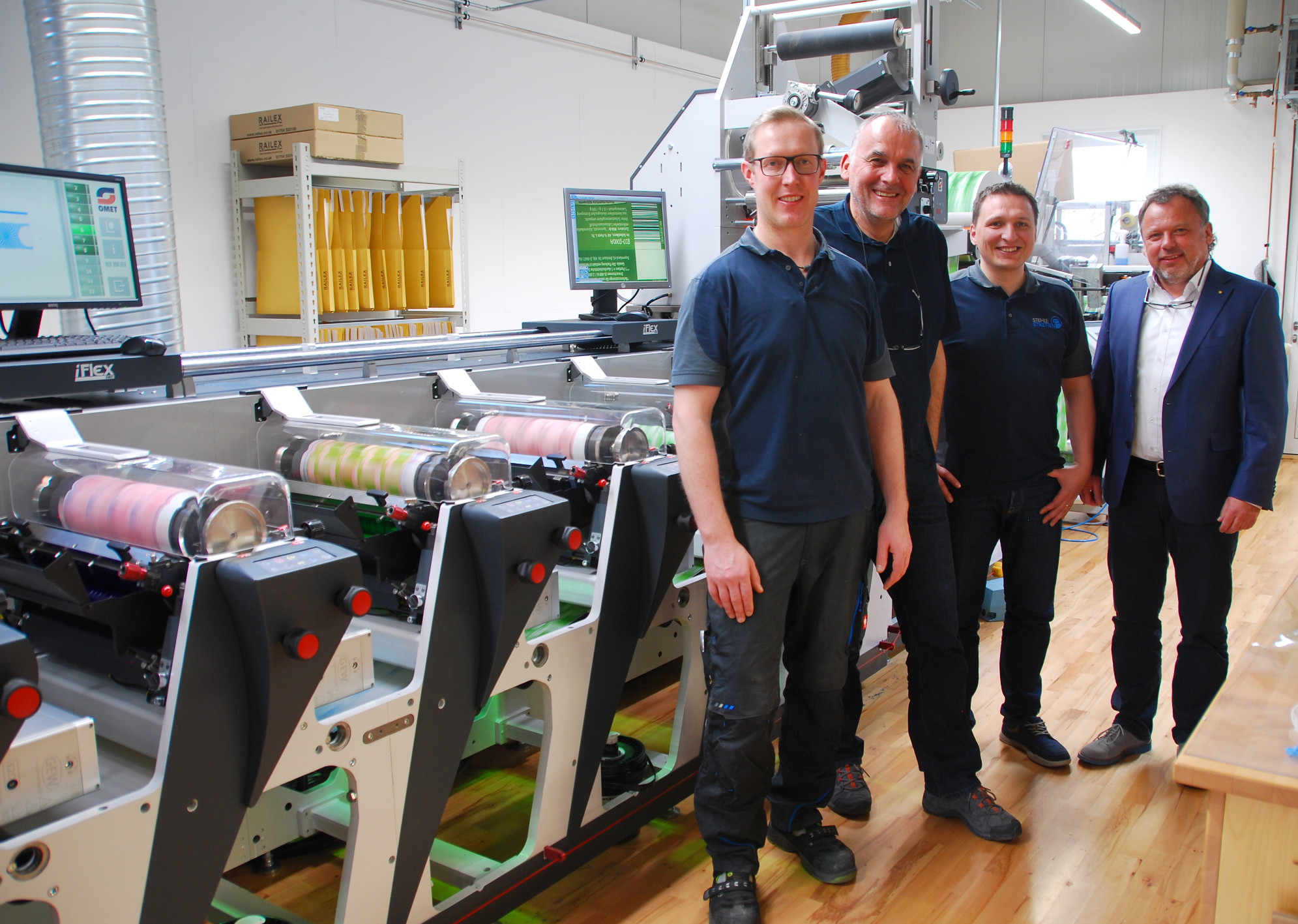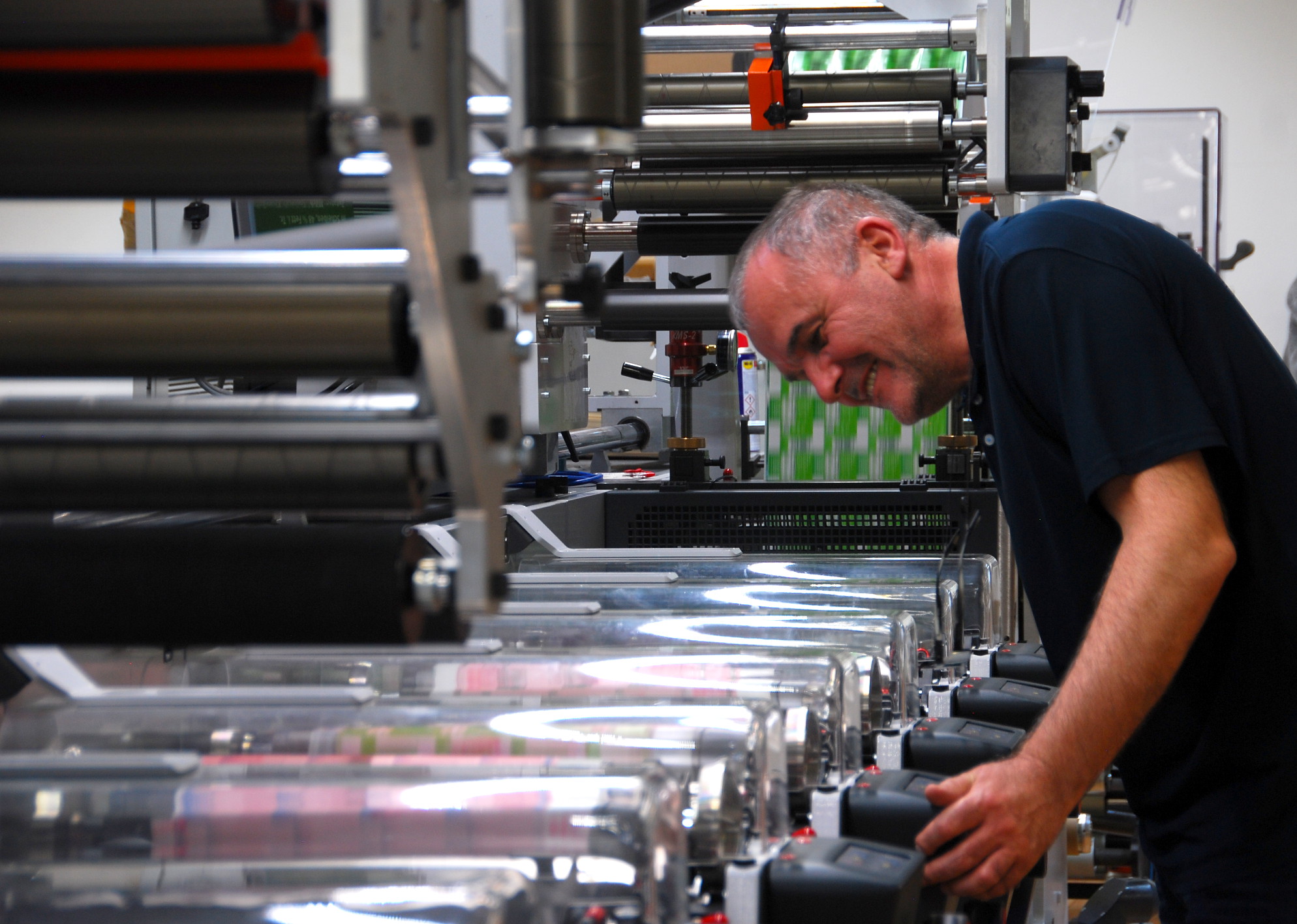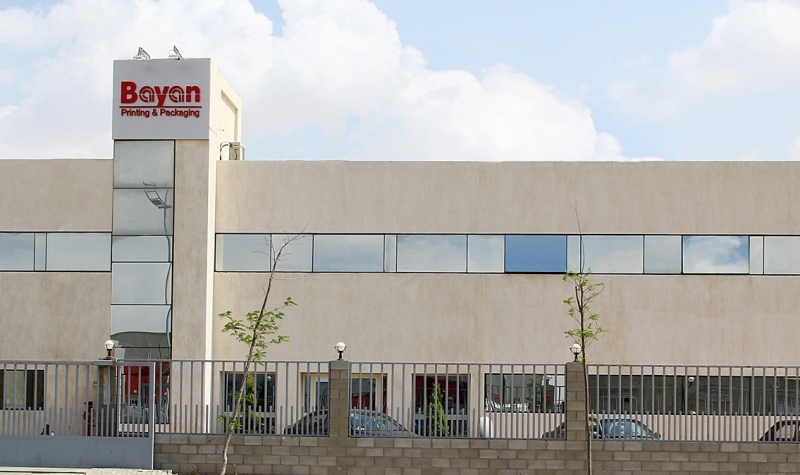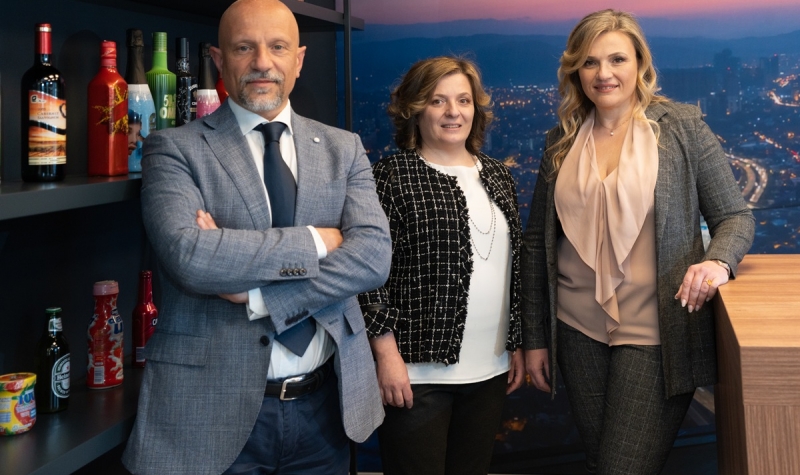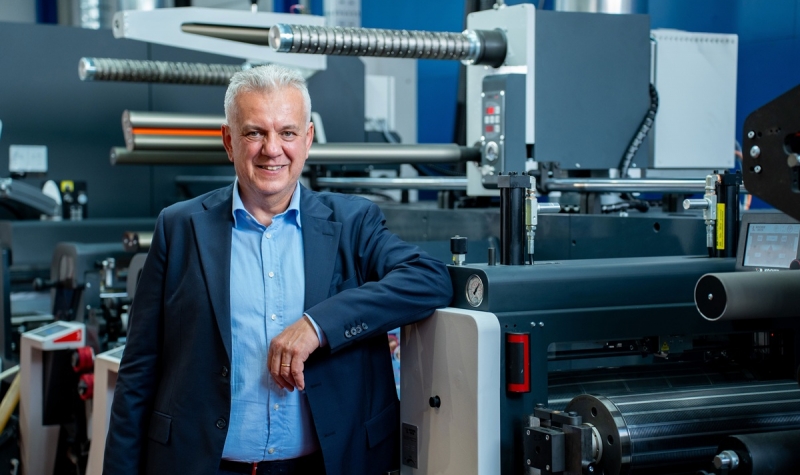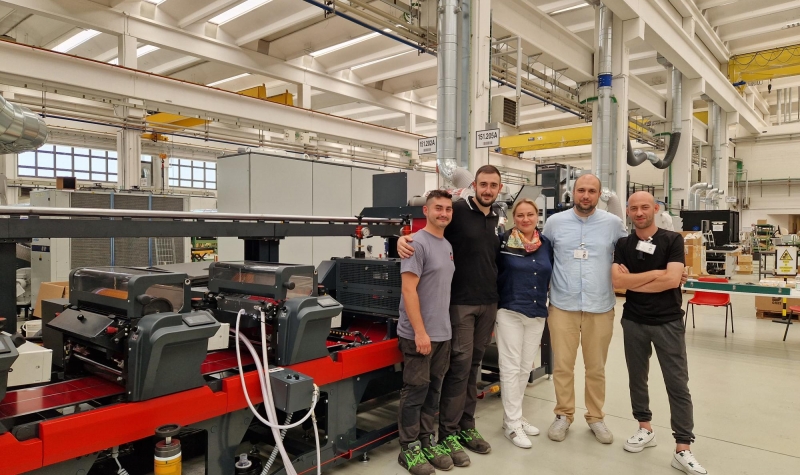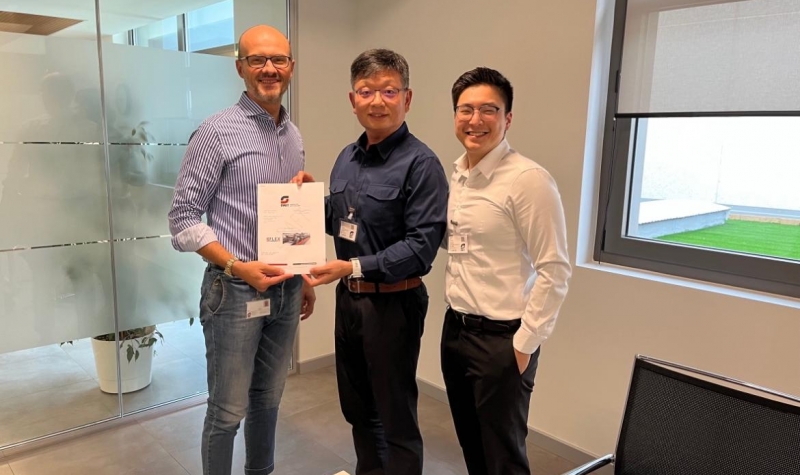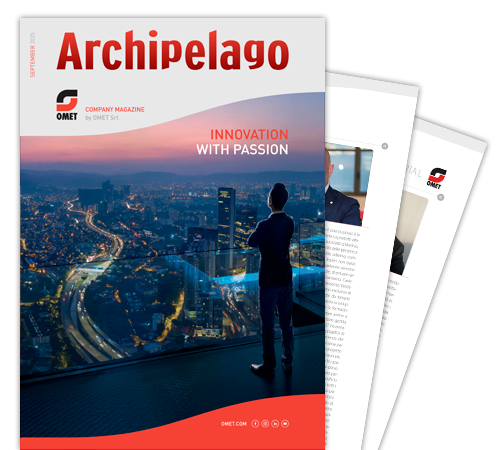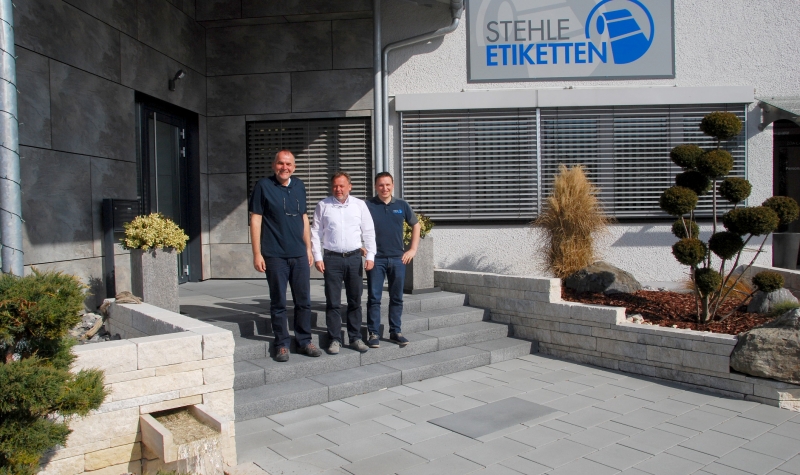
Stehle Etiketten: many years of company development accompanied as a supply partner
OMET’s iFlex eight-colour flexographic printing machine is the latest installation in the long Chromos era of the Stehle Etiketten print shop in Ravensburg.
If you want to understand the current DNA of a company, you should also know its history. At the Gebr. Stehle & Co. GmbH from Ravensburg, the start was a curiosity that was followed by long phases of continuous development. The current phase was mainly characterized by managing director Hans-Peter Jerg, who took over the company from its founders Klaus and Huber Stehle in 2003. In this article, together with the lawyer René Miedl, he provides an insight regarding the influence that Chromos GmbH, as a long-standing supply partner, had on the printing technology development of the label printing plant during this period.
The Gebr. Stehle & Co. GmbH is specialized in the production of self-adhesive labels and uses the usual printing processes for this purpose. Digital printing has been in production since 2015, and in 2018 OMET installed the iFlex 370, a new eight-color web press for flexographic printing. For the company from Ravensburg-Schmalegg, however, letterpress printing was, as for many other label printers, the process that laid the foundation stone and subsequently ensured many successful business years.

Stehle Etiketten’s production site has grown steadily over the years in line with the company’s development.
Success story after a low-risk start
The two company founders Klaus and Hubert Stehle had however a very special relationship with this printing technology. Their connection to label printing began when the two brothers, who had completed an apprenticeship as mechanics in the 1950s, joined Gallus in Switzerland in the early 1960s. For a good ten years they were in the service of the St. Gallen machine manufacturer and in the end, as assembly managers or heads of internal assembly, they took care of the worldwide installation of the machines. In 1973 they decided to start label printing themselves and install their own printing line.
For the brothers the decision was comparatively risk-free for two reasons. On the one hand, the production of self-adhesive labels showed a high growth potential at that time and on the other hand, they had the promise from the Gallus boss Ferd Rüesch (sen.), who was the owner at that time, to be able to return to the printing press manufacturer in Switzerland should their project fail.
By 1984, the company had developed so successfully that, in addition to the first five-color printing press, three other printing lines were produced in the press room. In 1985, the Stehle company moved to a new building as its current location. This time has been vividly remembered by the current managing director Hans-Peter Jerg. As a trained carpenter, he was involved in the interior design of the new hall. He had manual dexterity and so Klaus Stehle offered Hans-Peter Jerg to start in the company as a label printer. This is how he started his career in the label industry in 1985 in the new hall on a new Gallus V330.
Change of ownership gives fresh impetus
The next milestone in Hans-Peter Jerg’s business life followed in 2003, when the Stehle brothers sold their company to him for reasons of age. The established company had a dedicated team, so the new management brought fresh impetus to the business. From 2004 he was supported by René Miedl. As a trained flexographer who had already gone through all areas from prepress to printing in an offset printing company, both formed a team that complemented each other in many ways. In this favorable constellation, they were able to constantly advance the company in its development.
Since 2005, the company has invested every year either in technology or in buildings. In all cases, however, the Swabian principle applied that money had to be earned before it could be spent. At the same time, the number of employees has increased from five to almost 20. When the share of small orders predestined for digital printing began to grow a few years ago, they were first outsourced. “Meanwhile, we’ve been watching the market closely to find the right time to get into digital printing,”; recalls René Miedl. The decision to install their own digital printing system was made after sufficient potential had accumulated in 2015.
Trustworthy partnership establishes Chromos era
With the addition of digital printing, a new situation arose at Stehle Etiketten. Since the commissioning of a Viva 340 from Codimag in 2000, the print shop had gradually installed four more models from the French manufacturer. With this focus on mechanical engineering, a special market as a lucrative niche could be opened up in the course of time. Due to declining print runs, however, more and more jobs have recently shifted to digital printing. Although letterpress printing was still the method of choice for medium-sized orders, it was rather an uneconomical emergency solution for larger runs.
“We have discussed this situation of our company in detail with Chromos GmbH. After all, our successful development in recent years is closely linked to this supply partner,”; explains Hans-Peter Jerg. The Augsburg trading company represents the company Codimag in the German-speaking market. It has accompanied Stehle Etiketten since the turn of the millennium with the installation of almost all printing machines. Hans-Peter Jerg particularly appreciates the fact that Chromos GmbH has always proven to be a trustworthy partner who places the customer’s interests first and foremost when providing advice. This made it easier for him to decide to introduce another printing process in the company and to invest in a flexo printing machine from OMET. The machine manufacturer from Lecco, Italy, is also one of the companies that Chromos GmbH looks after as a sales partner. In October 2018, an iFlex with eight flexographic printing units and extensive additional equipment such as ‘Peel and Seal’; and ‘Delam-Relam’; was put into operation in Ravensburg.
Meticulous preparation
This installation was a particular challenge for the company. There was no practical experience with flexographic printing, and up to this point all the printing machines installed were translative systems. In addition to the new printing process, the task was therefore to integrate the first rotary press and all the associated peripherals, from the process-specific prepress stage to the clichés and printing inks, into the running operation.
Klaus Sedlmayr was involved in the planning and installation process as managing director of Chromos GmbH. He still remembers exactly how meticulously the commissioning was prepared down to the last detail. René Miedl even relied on high-quality technology from the outset for the entire peripheral equipment, including plate mounting equipment, plate cleaning system, parts washing system, etc. “We wanted the start-up phase to be as short as possible, because several flexographic printing projects were already in the planning stage. In the end, it actually worked. After assembly and acceptance of the machine, we started production without any significant familiarization phase”.
Valuable network of partners
The start of production went so smoothly because Stehle Etiketten was accompanied by a network of selected partners. For example, COE supplies the printing plates. It also provides support wherever prepress tasks require special know-how for flexo printing. When it comes to printing inks, the print shop continues to rely on Zeller+Gmelin. The ink supplier has been a competent supply partner since 2010 – initially for the inks used in letterpress printing.
“It is our company philosophy to use partner networks. In retrospect, it has once again proved to be the right way to put together a complete package with machine, printing forms and printing inks that is coordinated with each other,”; says René Miedl.
Details decide about the investment
Logically, the focus of the investment was on the printing press. In various tests, Hans-Peter Jerg was impressed by the iFlex 370 model due to its user-friendliness and stable running characteristics. Since his experience has shown that the differences in technology and performance of most machines on the market are becoming smaller and smaller, he has paid particular attention to details. With the trained eye of a skilled craftsman for the intricacies of mechanical engineering, he discovered some things on the iFlex that make life easier for the operating personnel in practice.
The opportunity to exchange practical experience with iFlex users also played an important role in the investment decision. “In some cases, our expectations were even exceeded. The press proofs showed a print quality, e. g. with almost zero run-off, which we had not expected,”; recalls Hans-Peter Jerg. Now that he has been able to gather his own experience, he particularly appreciates the additional equipment options. Both the production of multilayer labels using the Peel-and-Seal device and the printing of the reverse side of the glue layer using the Delam-Relam module are used regularly. In retrospect, even more extensive additional equipment would be conceivable for him.
A good addition to the product range
The new iFlex fits into Stehle Etiketten’s existing production capacity as hoped. “What is particularly helpful for us is that we can shift jobs in particular from semi-rotary letterpress to flexo printing, which can be produced more economically with the new machine. Since our customers purchase their labels in part throughout Europe, we are often in competition with foreign suppliers. In these cases, we can now offer more competitive prices,”; explains René Miedl.
On the one hand, the postponement of orders ensured that the new machine had a certain basic capacity from the outset. On the other hand, the shifting contributed to the relief in letterpress printing. As new projects were added during the start-up phase, the targeted single-shift capacity utilization quickly moved within reach. The company benefits from the fact that new orders can be implemented without lengthy decision-making processes. Many customers appreciate these short reaction times. In addition to companies from the regional environment, the Ravensburger label printing company’s clientele also includes global players. It is estimated that half of the orders received throughout Europe come from the food sector, and almost a third are industrial customers. The remaining labels are supplied to the pharmaceutical and veterinary sectors, among others.
Printing inks 100 percent low migration
As the majority of the customers are located in the food segment, the company decided, in response to the ITX discussion at the time, to switch completely to low-migration variants for printing inks and coatings. Stehle Etiketten was thus one of the first printers to use LM ink systems in letterpress printing. Since then, continuous low-migration production has been a basic prerequisite for installation with every new investment.
Another principle of the company is consistent inline production. Like all other printing lines, the iFlex is therefore also equipped with a Turret rewinder, so that small rolls ready for dispatch are already produced on the press. This eliminates the need for an assembly department. This shifts the task of quality control to the press. The printing staff has been coping well with this responsibility for years. In any case, each machine is operated by an employee who is responsible for ‘his’ production line. As the experience in Ravensburg shows, all sides benefit from this concept. The company achieves a higher added value and the employees gain satisfaction and self-confidence through the trust placed in them.
Sharpen your image on the market
In the early days, the company usually did well to keep its feet on the ground. Recently, however, it has experienced great technical progress and constant growth. The successful development can be seen particularly well in the production buildings at the location in the tranquil Ravensburg Schmalegg. They were repeatedly extended by extensions or, as most recently in 2018, by the expansion of storage capacities. In the future, Hans-Peter Jerg and René Miedl want to communicate the company’s importance, which has grown considerably in the meantime, with a self-confident external image. They have therefore made targeted investments in marketing measures. This ranges from the revision of the company logo and the website to the creation of a new image brochure and the representative design of the outdoor area.
To tackle challenges with both pragmatism and optimism is part of the DNA of Stehle Etiketten. An illustrative example of this is the introduction of flexo printing with the installation of the iFlex 370 described in this article. According to Hans-Peter Jerg, this investment decision was the right step to gain the necessary experience when entering the new process technology. Since the press was already well utilized after only a few months, he believes that an expansion of the flexo printing capacities in the foreseeable future is quite possible.
Article by Klemens Ehrlitzer
 is the web magazine with all news about OMET Group
is the web magazine with all news about OMET Group 